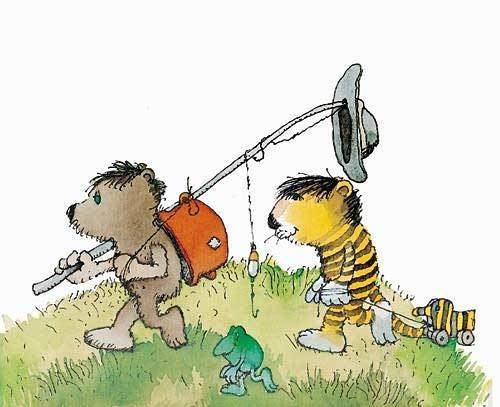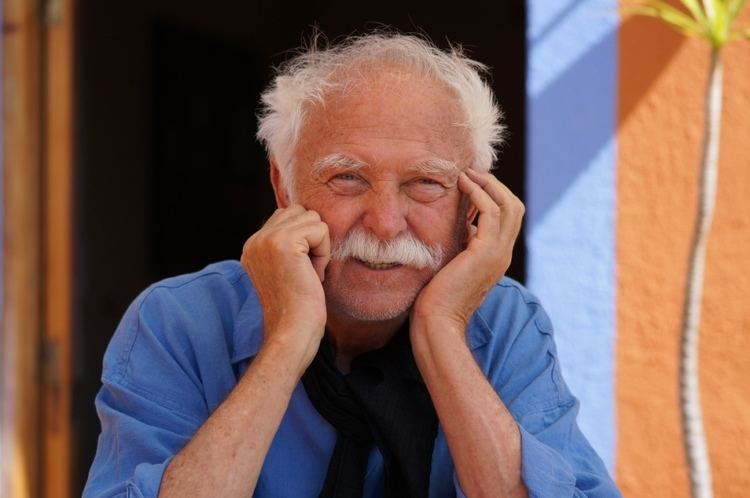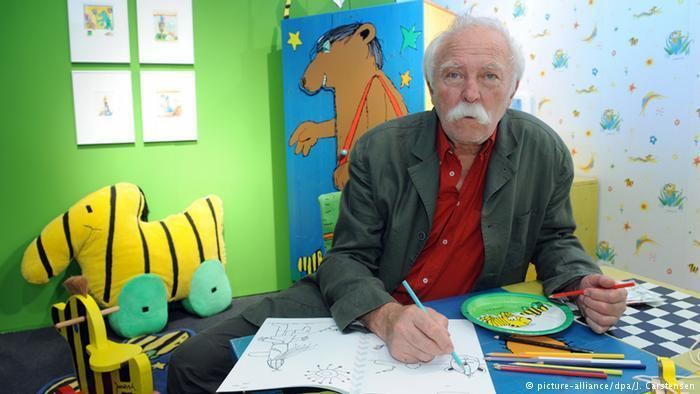Role Author | Name Horst Eckert | |
 | ||
Albums Tigerenten-Liederchen, Lari Fari Mogelzahn Nominations Astrid Lindgren Memorial Award Similar Monika Beisner, Wolf Erlbruch, Willie Glasauer Profiles | ||
Janosch stories from the big fat fabulous bear
Janosch (born as Horst Eckert) (born March 11, 1931) is one of the best-known German children's book authors and illustrators. He was born in Hindenburg (now Zabrze, Poland) in Upper Silesia to a family of mixed German and Polish origin. He said in an interview that he is Silesian of nationality.
Contents
- Janosch stories from the big fat fabulous bear
- Harhalt stopp shit und janosch beim putzen mit alf bio
- Awards
- Works
- Tigerente
- References

After World War II, the family fled to West Germany. In the area of Oldenburg, Janosch worked in a textile mill. In 1953, he went to Munich, where he studied for some terms at the Academy of Arts, but broke off his studies eventually. Afterwards, he worked as a freelance artist. In 1960, his first book for children was published with George Lentz, a friend of his, who also persuaded him to take on the penname Janosch. Within the next 10 years, numerous books for children followed with different publishing houses.

In 1976, he published his own rather different version of the fairy tale The Brave Little Tailor by the Brothers Grimm, known as a fairy tale called, Der Riese und der Schneider (English version as "The Giant and the Tailor"), his own rather different version of the fairy tales Tom Thumb, and Thumbling by the Brothers Grimm, known as a fairy tale called, Der Däumling (English version as "Tom Thumb"), and a fairy tale called, Die Prinzessin mit der Laus (English version as "The Princess and the Louse"), three of which are part of the children's book Update on Rumpelstiltskin and other Fairy Tales by 43 Authors, which is compiled by Hans-Joachim Gelberg, illustrated by Willi Glasauer, and published by Beltz & Gelberg. He also published books for adults, in which he deals with his childhood experiences of growing up with an abusive father and a God-fearing mother, constantly recurring topics being friendship, family relationships, and the quest for the meaning of life.

Amongst his most famous figures is the Tigerente that appears in Oh, wie schön ist Panama and the stories around the little tiger and the little bear.

By 1980, he had published over 100 books for children in nearly 30 languages. By then, he had left Germany, and now lives on the island of Tenerife in the Atlantic Ocean.

Harhalt stopp shit und janosch beim putzen mit alf bio
Awards

Among others, he has received the following awards:

Works
In German, Janosch published until today about 150 books which in part were translated into 30 languages.
Tigerente
The Tigerente (lit., tiger duck) is a children's book character created by the German artist and author Janosch. It is a little wooden toy duck on wheels, striped black on yellow, that is pulled around on a string by various characters of Janosch's books. It never has a line of dialogue, but still has become by far the most popular figure ever created by the author. The Tigerente has since appeared on a wide range of products including posters, postcards, high school art projects, buttons, mugs, socks, umbrellas, cutlery, and nearly every item of children's furniture imaginable, and has been the namesake and mascot of the German TV show Tigerenten Club, all without ever uttering a single line. In the English translation of the book "The Trip to Panama" the Tigerente is actually referred to as 'tiger duck'. The story has been made into a contemporary opera "Oh, the beautiful Panama" by Lin Wang. The opera was premiered at Deutsche Oper Berlin in 2013, and was a sold-out event.
